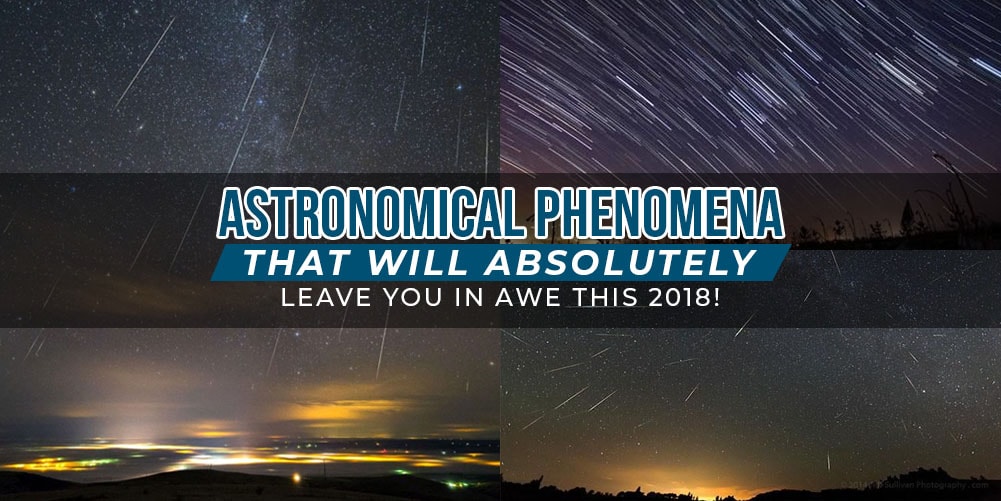
The opposite happens in January when Earth reaches perihelion. – At 20:11 (8:11 pm) UTC on July 3, 2017, Earth will be at aphelion: the furthest point from the Sun in its yearly orbit. In the Southern Hemisphere, it’s the winter solstice and the shortest day of the year. – This solstice is the summer solstice in the Northern Hemisphere, where it is the longest day of the year.
#Astronomical phenomena 2017 full
This Full Moon looks around 12 to 14% smaller than its counterpart, the Supermoon. – The Full Moon is at apogee, the farthest point from Earth, making June’s Strawberry Moon a Micromoon. – The best time to see shooting stars from the Eta Aquarid meteor shower is in the early morning, just before dawn, on May 5 and 6, 2017. A Waning Crescent Moon will make it dark enough to see the shooting stars, as long as the weather is good.

– The Lyrid meteor shower is expected to peak between April 22 and 23, 2017. – The March equinox is the first day of spring in the Northern Hemisphere and the start of fall in the Southern Hemisphere by astronomical season definitions. In surrounding areas, a partial solar eclipse will be visible. – The typical ring of fire of an annular solar eclipse will be visible in a narrow belt stretching from southern and western Africa, much of South America, the Pacific, the Atlantic, the Indian Ocean, and Antarctica. The eclipse will be visible from Europe, most of Asia, Africa, and most of North America. – A penumbral lunar eclipse is hard to see with the naked eye and is often mistaken for an ordinary Full Moon.

The opposite happens in July when Earth is at aphelion. – At 15:17 (3:17 pm) UTC on January 4, 2017, Earth will be at perihelion: the closest point to the Sun in its yearly orbit. – The first major meteor shower of the year, the Quadrantids, will peak on the night of January 3 and early morning hours of January 4. Some last just a few hours while others can last several days or weeks, but once they’re here, time is of the essence! So mark your calendar, grab your telescope, and take a look at some of 2017’s unforgettable events. From the Moon, Asteroids, and Planets to countless deep space objects, you can discover something new in the night sky just about every night of the year within the vast expansion of the Universe.Īs the Earth makes its annual orbit around the Sun, we get the opportunity to view special celestial events like meteor showers, conjunctions, and eclipses.


 0 kommentar(er)
0 kommentar(er)
